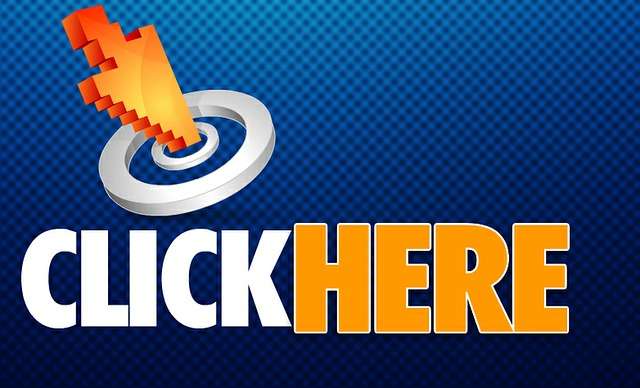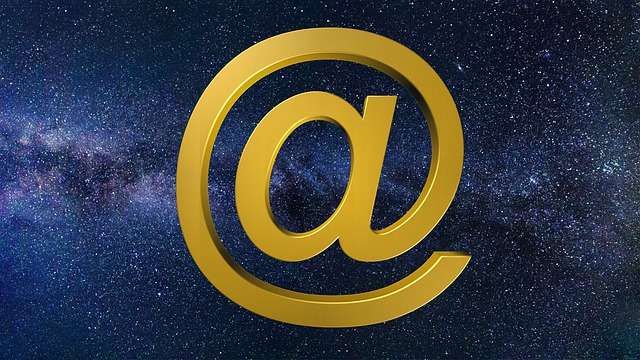
by Suellen | Email Marketing, Online Success
I know. You don’t want to be pushy. Neither do I.
But if you don’t give them a nudge to click on your links or buy your stuff, they won’t get the benefit of what you are offering.
So that’s where Calls-to-action come in. They are vital to your email marketing campaigns.
Your call-to-action is the instruction you give your audience to do something in order to get their benefit. Click here. Go to this page. And so forth.
With good calls-to-action, your customers receive the benefits and you grow and build a sustainable business. If you don’t tell or show your audience what you need them to do, you are unlikely to succeed.
A call-to-action is like a guide that instructs your readers on where to go and what to do. In fact, you can increase your click-through rates by over 300% just by adding one single call-to-action, according to a WordStream report. This highlights the importance of adding them to your email copy if you want to run a successful email marketing campaign.
Here are four tips to enhance your email calls-to-action to increase your conversions and run a more profitable email marketing campaign. (Remember: your customers receive the benefits offered. It’s a win/win)
Use a Button and Colorful Graphics
Buttons are easy to see and obvious to most readers. They are eye-catching, clear, straight to the point, and easy to understand and use.
Buttons also can improve your results by nearly 28% more than calls-to-action without them. A big red “buy now” button or “read more” is more obvious and easier for your subscribers to understand. Making it more likely for them to follow through if your products and services are what they need.
Use Action-Oriented Words
“Get the discount here” or “Try your free trial today” are perfect examples of action-oriented words that should be used in your calls-to-action. These words inspire your readers to do something and grab their attention.
Keep it Short and Urgent
Too much information or crowded images only persuade your audience to click away instead of click-through.
Your readers prefer quick and easy – not confusing and overwhelming. Don’t make your readers second guess instead of making a quick decision.
Using a sense of urgency and clear and direct information increases your click-through rate because people fear missing out. However, be sure to use this appropriately and not take advantage or misuse your readers. Urgency should be to inspire, not to take advantage of your readers.
Highlight the Value They’ll Receive
When deciding on what copy to use, be quick and to the point by highlighting the most valuable part.
What are your readers getting out of doing the action you ask of them? Do they receive a discount, more education, a chance to participate with others, and a bigger community?
If you lead with such benefits, it will be easy to get your readers to take action.
You can see why call-to-action statements are so important.
Make sure your CTAs align with your goals and objectives, and include them in each and every email copy or campaign you create.
Keep it simple, direct, and obvious, and remember the power of call-to-action buttons.
More benefit for your customers! More success for you!

by Suellen | Email Marketing, Online Success
How many of your customers aren’t receiving your emails?
You go to the trouble of writing and sending great emails. Yet some of your customers aren’t receiving them. Why?
It’s called “deliverability,” and it’s an important part of your email plan. If you are sending 100 emails and only 60 are receiving them, there’s a problem.
Email deliverability is about the percentage of your readers who are receiving your emails. Keeping up with this includes monitoring your bounce rate. It also includes increasing the safety and authentication of your emails to ensure your emails aren’t getting rejected by your subscriber’s in box.
In 2003 the US Legislature passed the “Can-Spam Act.” This is a law to prevent unsolicited porn and spam from bombarding your inbox. There are some hefty penalties for people who persist sending such material.
As a result, your email marketing provider is on high alert for marketers who are sending this unwelcome material. They can be fined or even closed down if their clients are sending such material.
One flag for the providers is “low deliverability.” That metric shows how much of the mail is probably going to spam. The spam folder means that the receiving email service rejected the email.
So in order to be more effective and to keep a good reputation with your email provider, here are some ways to improve your email deliverability
Have a Double Opt-in Process
Use double opt-in forms to ensure the information subscribers provide is correct. For example, an incorrect email address or typo can easily lead to your email being rejected. However, double opt-in forms require your readers to confirm their information, thus avoiding this altogether.
You know, that’s the “check your email and click on the confirmation link” response we see often when we sign up. Just be sure to make this requirement clear when signing up; otherwise, it can lead to further confusion.
The double opt-in confirmation means it’s not a robot and that the email address is real.
Establish a Proper Send Schedule
In other words, don’t spam your readers.
If you send too many emails, they won’t see you as trustworthy nor know the content as personalized and valuable. If your content gets marked as spam, eventually, their email service provider will reject you altogether.
And yours might also.
So how many would be too many? Many respected marketers send daily or two or three times a day. If the material is good, that’s fine.
Five times or more a day could seem excessive. It depends on what you are sending. Certainly don’t send that many with just sales pitches in them.
Enable Tools to Authenticate Your Emails
We know that hackers have become more of a problem to all of us. Some have been known to hack email sending addresses and spam clients with porn or predatory content. Obviously, this gives the sender a bad name. (Kind of like identity theft).
The techies have come to the rescue. There are tools available to authenticate and secure your sending ip address – thus stopping such predatory behavior.
A terrific site for such help is SparkPost.com. They have free tools available to help you secure your emails.
Add Easy Unsubscribe Options
This is imperative.
I remember when I had my first unsubscriber. It really hurt my feelings, but that was just being naive.
Since then, I have learned differently. While not something you want to see, it helps improve your deliverability. It keeps those truly interested in seeing your content on the list and screens out those who aren’t interested in your message.
You can “be yourself,” without having to placate those who aren’t really your people.
Implementing guidelines from the Federal Trade Commission, most email service providers require that you add an obvious way for subscribers to opt-out if they want to. This also further authenticates your emails.
To recap: the goal of proper email deliverability is to make sure your content ends up in the subscriber’s inbox in order to be seen and clicked open to be read. If your emails never make it or consistently end up in their spam folder, you won’t see any conversions. In the most extreme cases, you will have to start over – from scratch.
So take a deep breath and go check your email account. It requires mindfulness and a little work, but it’s so worth the effort!!

by Suellen | Email Marketing, Online Success
Email sequences can lend a major thrust to your business. So here are a few tips to make them topnotch.
When I say, “email sequence,” I’m referring to a set of emails with a certain subject matter which you send to a specific group of subscribers. Sometimes daily. Sometimes weekly or twice weekly. Sometimes over a longer period.
The most common type of these emails would be your welcome sequence. You might want to send several welcoming emails letting people know about your business and reaching out to them for a reply or some feedback.
Other sequences can be designed for a product launch or a free course signup. Or you could just create a sequence for certain subject matter you would like to share with your audience.
These sequences will be set up in your autoresponder and will go out automatically when your people trigger them. (Usually through a signup). These “triggers” can be “behaviors” in certain cases.
A couple of the most common behaviors include the downloading of your content or purchase of your products. More sophisticated systems can even include the browsing history of your customer.
There can also be time-based triggers. You can set up your autoresponder to send a sequence a certain number of days after a purchase.Or in some instances, the subscriber’s birthday.
These criteria should be set depending on your niche and email marketing needs. However, the way you craft the material is vital to your overall success.
These tips will help you develop compelling email sequences:
Set aside some time to Outline Your Purpose
First, you must know your goal, and in order to do that, you must know your audience, including the kinds of problems they are dealing with.
Second, what is the overall purpose of sending and creating the email sequence? Don’t just create an email sequence because you know it is the best marketing strategy. It helps if you have a clear goal and know what you want to accomplish.
Is your goal to educate your clients? To let them know that you are reliable and your emails will be useful to them? Is your goal to lead them into a special product launch?
Sometimes your email sequence will be part of a course they buy.
When you set up your autoresponder, you will be able to signify the number of days between emails. This is very helpful when setting up courses or other sequences.
Perfect Your Title and Subject Lines
We’ve talked about this before, but your subject lines and titles are very important.
Believe it or not, there was a day when people were excited to get an email! Any email!
Obviously, those days are long gone. So think about how you go down the list of emails you have received. What makes you open them? A catchy title. One that looks like it might have valuable information. Or one that could help you solve a problem.
So take this cue for your titles. If you want your people to open your emails, have titles that will stand out and grab their attention.
Then you can check your open rates. This metric allows you to keep track of how your content or emails are performing. If your open rate is not what you want it to be, it is likely due to your titles or subject lines.
Make sure they are relevant, short to the point, and have your most important keywords in the beginning. While they may be short, you don’t want them to be boring or crowded with too much information to look like a spam email.
If your subject lines look like they are spam, they will go t the spam folder.
Always include a Call-To-Action
For every goal you set, there should be a separate call-to-action that helps you to achieve it. But, again, make sure it is easy to understand, complete and obvious to your reader.
The call-to-action (CTA) can be to sign up for or purchase something. However, it can be for something a simple as clicking on a blog post link.
Be Specific, Clear, and Educational
Keep each email straight to the point, and don’t make it too long. Always use your email as an opportunity to educate and provide value to your customer.
The point is to exceed the expectations from the start to gain their trust and commitment. The more educational content you provide with accurate information that helps your subscribers, the more likely they will trust your authority and establish your credibility.
If your emails are long and rambling, very few people will read them. They just take too much time and effort. So respect your customers’ time and be as concise as possible.
Be sure your email sequences are worth your time and effort.
These tips should help you to craft effective email sequences. When done correctly and with some forethought, you will find these sequences to be a major part of your email marketing plan.
They will be well worth the trouble.

by Suellen | Email Marketing, Online Success
Do you segment your email lists? In other words, do you divide your lists into groups which are specifically appropriate for them?
Separating your email list subscribers into different segments of your audience is a practice which most marketers recommend.
For instance, if someone has signed up for a free ebook aimed at writing a book, they should be kept in a similar flow of content. You wouldn’t immediately start sending them material pertaining to weight loss.
When subscribers sign up to your email list, they will receive appropriate emails. Not the same emails as people who are in another targeted sequence. Thus, segmentation allows you to better market and communicate with your new potential customers and readers.
Most lists are organized based on three different factors: demographics, location, behavior, and interests.
Depending on your niche and marketing goals, you may need to organize them differently. However, the most popular way to figure your segmentation is to observe their online behavior.
Once they are opted-in to your campaign, readers are then divided based on how they interact with you and your content. Do they open more often than others? Do they click-through links frequently?
If so, it would be good to put them on a different path from those who are less likely to open or click-through your emails. They clearly are interested in your products and information.
There are three main reasons list segmentation is an important step in your email marketing process:
Segmentation Allows You to Send More Targeted Information
Most businesses will have more than one buyer’s persona, which means not every email you send needs to go to every lead or customer on your list. It also means you likely have more than one goal in mind when it comes to email marketing.
Segmenting allows you to pick certain keywords or information in order to organize and better target your customers with different key pieces of content.
For example, readers who have bought your products are more likely to get content about the products they purchased or new products to try. On the other hand, new subscribers who have not purchased a product, will be reading content on why the products benefit their life. Or perhaps information about you and your business, getting to know you better.
By observing the behavior of these new customers, you can also get to know them better. Here you could add surveys or questions to increase your understanding of these new people.
Segmentation helps you to increase overall conversions
List segmentation better targets your readers, which allows you to communicate more effectively. When you understand which point of the buyers’ journey they are on, then you have a better chance of making sales.
Segmentation improves your engagement and your reputation
Understanding your audience and communicating with them appropriately are keys to increasing your conversions and running successful email campaigns. Better communication provides more value to your customers. As you send appropriate material, you are further building your reputation and improving your engagement—two important metrics for creating a sustainable business.
The bottom line is this: the reason for list segmentation is to ensure the right emails are being sent to the right people.
With that in mind, it’s easy to see that with segmentation you are setting yourself up for greater success in achieving your email marketing goals.
Though it can require some thought and action, segmentation is worth the extra effort.
You’ll be glad that you took the time.

by Suellen | Email Marketing, Meeting the Challenges, Online Success
Email automation. What a gift!
With automation, we can set up emails to go out when we are sleeping – or on vacation. And we can set up as many as we want to go out when people sign up for different products or offers.
These are often referred to as automation flows or autoresponder flows. Sets of emails sent automatically to subscribers to streamline and enhance our email marketing process. Automation can be set based on time or on a certain set of events – such as signing up for a newsletter.
Automation can send them a welcome email. It will also ensure they receive the other emails in the series consistently.
What’s more, automation can better segment our lists to target and refine our communication. Thus, better results and better conversions.
Automation can do what would be impossible for us to do.
Let’s look at five common email flows you should implement in your email marketing plan:
Welcome Email Series
First, establish each new connection with a welcome email. If someone subscribes to your list, you should never neglect the opportunity to say hello and thank you for joining the community. They need to know at first contact what to expect and when to expect it.
Abandoned Cart Email Series
When a possible customer starts to purchase and then doesn’t follow through, an email series can be quite effective. That person was interested, but decided for some reason not to buy.
This is a straightforward reminder crucial for e-commerce businesses. This email reminds the customer that they left items in their cart to purchase.
Often times this is a great opportunity to offer a small discount and help your customer follow through with the purchase.
Personalized Discounts
Some marketers ask for a birthday, anniversary, or other personal information when a customer signs up. Then when the customer’s birthday or anniversary comes around, they can be recognized, making them feel special.
Post-Purchase Series
This is a set of emails sent after a subscriber makes a purchase or follows a certain call to action. This shows that you appreciate their business and hope to continue to provide value to them. It also ensures they use the products or services correctly to maximize their usefulness.
This is a great time to ask questions and give feedback to establish your trustworthiness and credibility.
This series can be a tremendous boost to your business.
Educational Email Series
Also known as lead nurturing content, this is a very valuable series of emails. This series can build a connection with your subscribers to keep their interest and understanding about your business, products, or services.
The more education and value you provide your subscribers, the more likely they are to become loyal customers.
Remember, automation is there to keep you consistent and help reduce tedious and mundane work.
Never approach this as something you can set up and ignore completely.
If you want to crush your email marketing goals, always keep track of the results and test new automated series. Design and tweak your automation to get the best results.
Your customers will love you for it!
















